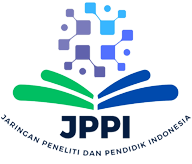Guide for Author
Author Guidelines
Writing Guidelines
The writing guidelines are tailored to the journal's provided template, which can be downloaded here. Authors are expected to adhere to the following instructions to ensure uniformity and compliance with the journal's standards.
INSTRUCTIONS FOR AUTHORS
-
Article Requirements
- The article must align with the scope of the journal.
- The article must be free from plagiarism.
- The article must not have been previously published or be under consideration for publication in any other journal.
- Priority will be given to articles based on empirical research.
- Articles can be written in Bahasa Indonesia or English using the following formatting:
- Software: Microsoft Word
- Font: Times New Roman, size 11
- Line spacing: 1.15
- Paper size: A4
- Submissions must be made via the journal's submission system at: https://journal.uniga.ac.id/index.php/jpif/index.
-
Required Document Components
Each submission must include the following details:- Title: Clear and concise.
- Author Information: Full name, affiliation, and email address.
- Abstract: A concise summary (200 words) containing the following elements:
- Objectives of the study
- Methods employed
- Research results
- Conclusions
- Implications of the findings
- Keywords: Provide 3–5 relevant keywords that reflect the main content of the paper.
-
Structure of Empirical Research Papers
Articles based on empirical research should be organized into the following sections:- Introduction
- Methods
- Results and Discussion
- Conclusion
- Bibliography
-
Introduction
- The introduction should include:
- Background of the research.
- A literature review to establish the state of the art in the field.
- Clear objectives and a problem formulation.
- The introduction must be written as a single cohesive chapter without subtitles.
- The introduction should include:
-
Methods
- The methods section should provide a detailed description of the following:
- Type of research conducted
- Data collection techniques
- Data sources
- Types of data collected
- Data analysis procedures
- This section must be written in paragraph form, avoiding the use of bullet points.
- The methods section should provide a detailed description of the following:
-
Results and Discussion
- Present the key findings from the study, supported by original field data obtained through:
- Questionnaires
- Surveys
- Documents
- Interviews
- Observations or other techniques
- Enhance clarity using tables or graphs, ensuring the following format:
- Tables:
- Centered on the page.
- Sequentially numbered (e.g., Table 1, Table 2, etc.).
- Titles placed above the table with descriptive information below the title.
- Sources of data must be indicated below the table in proper alignment.
- Figures:
- Centered on the page.
- Sequentially numbered and mentioned explicitly in the text.
- Tables:
- Ensure that all figures and tables are referenced within the main text.
- Present the key findings from the study, supported by original field data obtained through:
-
Conclusion
- Summarize the research findings concisely and clearly, highlighting their significance.
- Explain the logical implications of the results, particularly in the context of advancing the science and practice of physics education.
- Use Garamond 12, bold, and do not indent paragraphs in this section.
-
Bibliography
- The bibliography must adhere to the APA Style 7th Edition for all references and citations.
- It is strongly recommended to use reference management software such as Mendeley, Zotero, or Endnote to ensure consistency and accuracy.
























